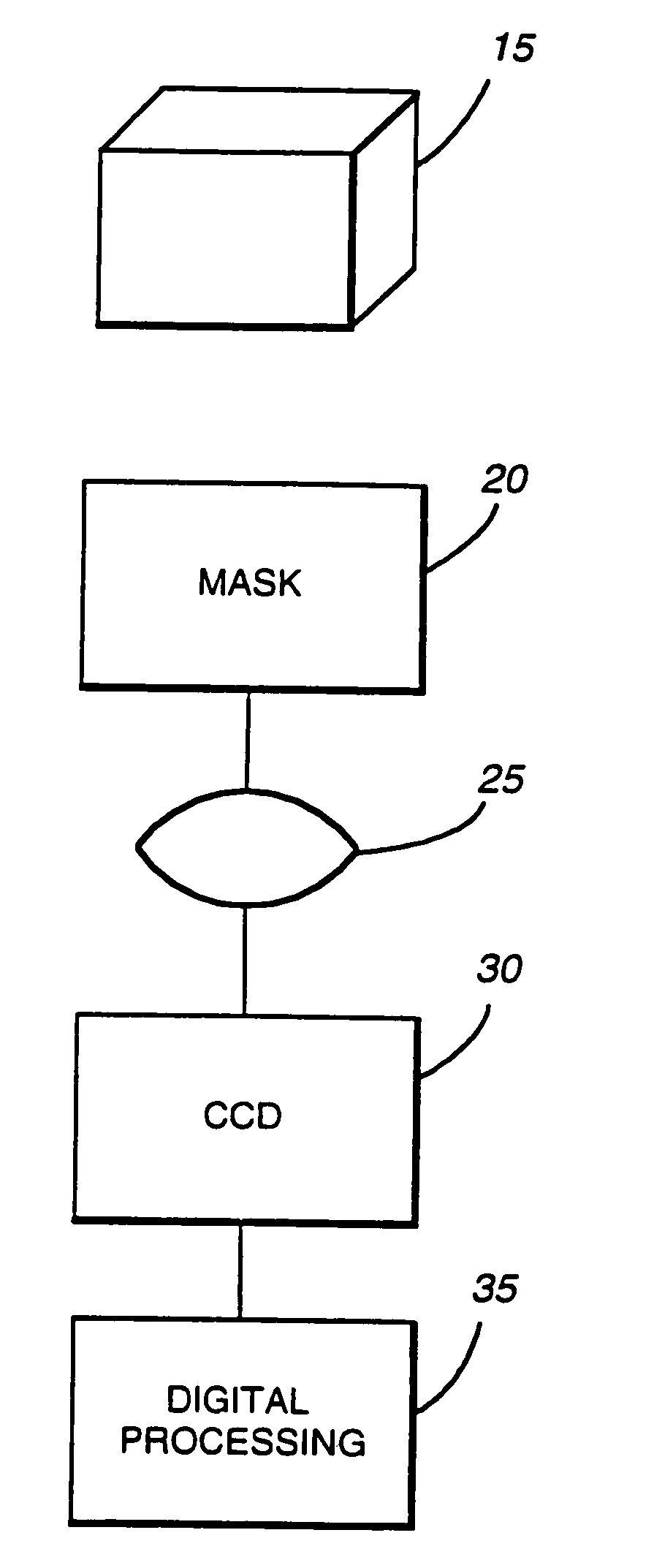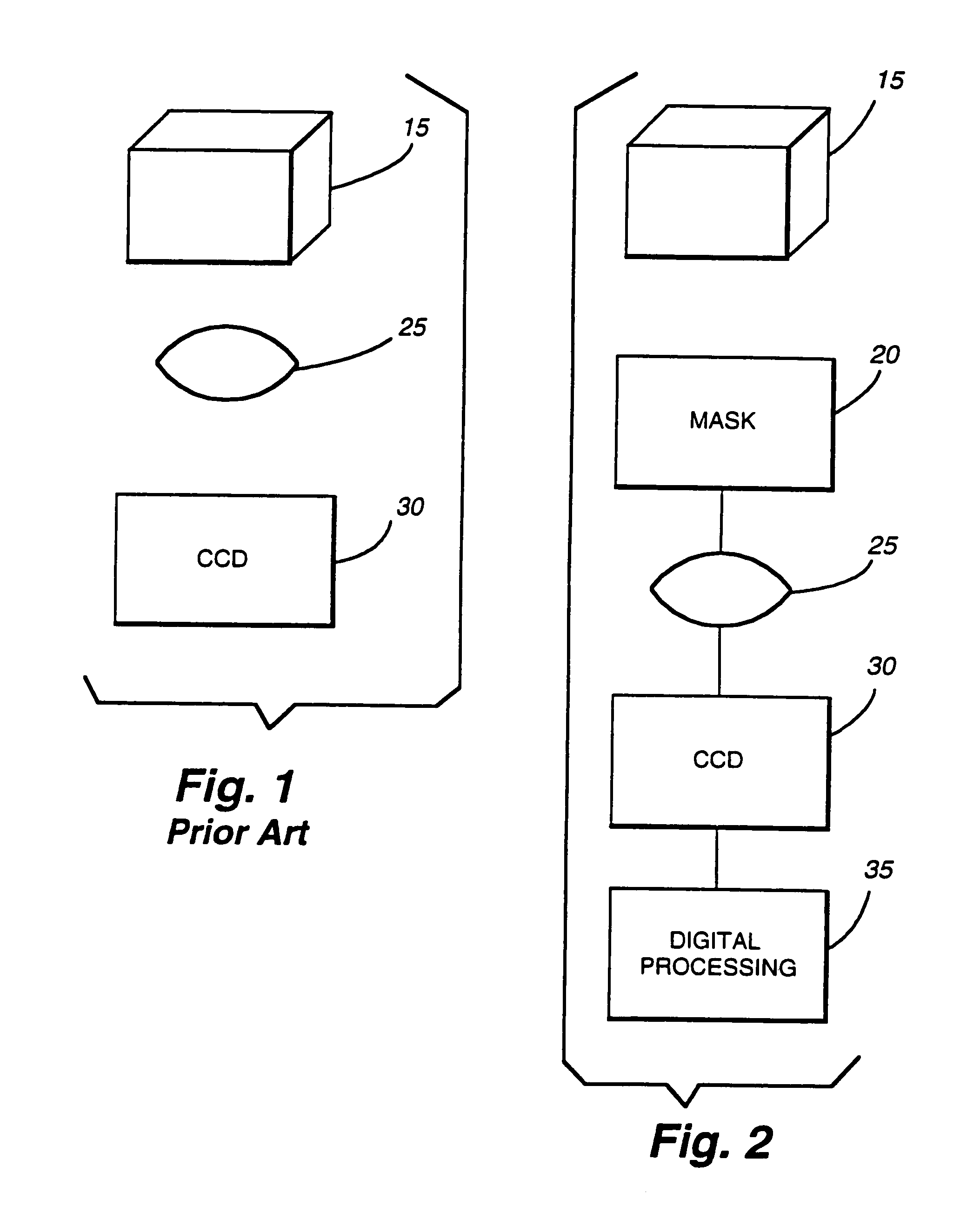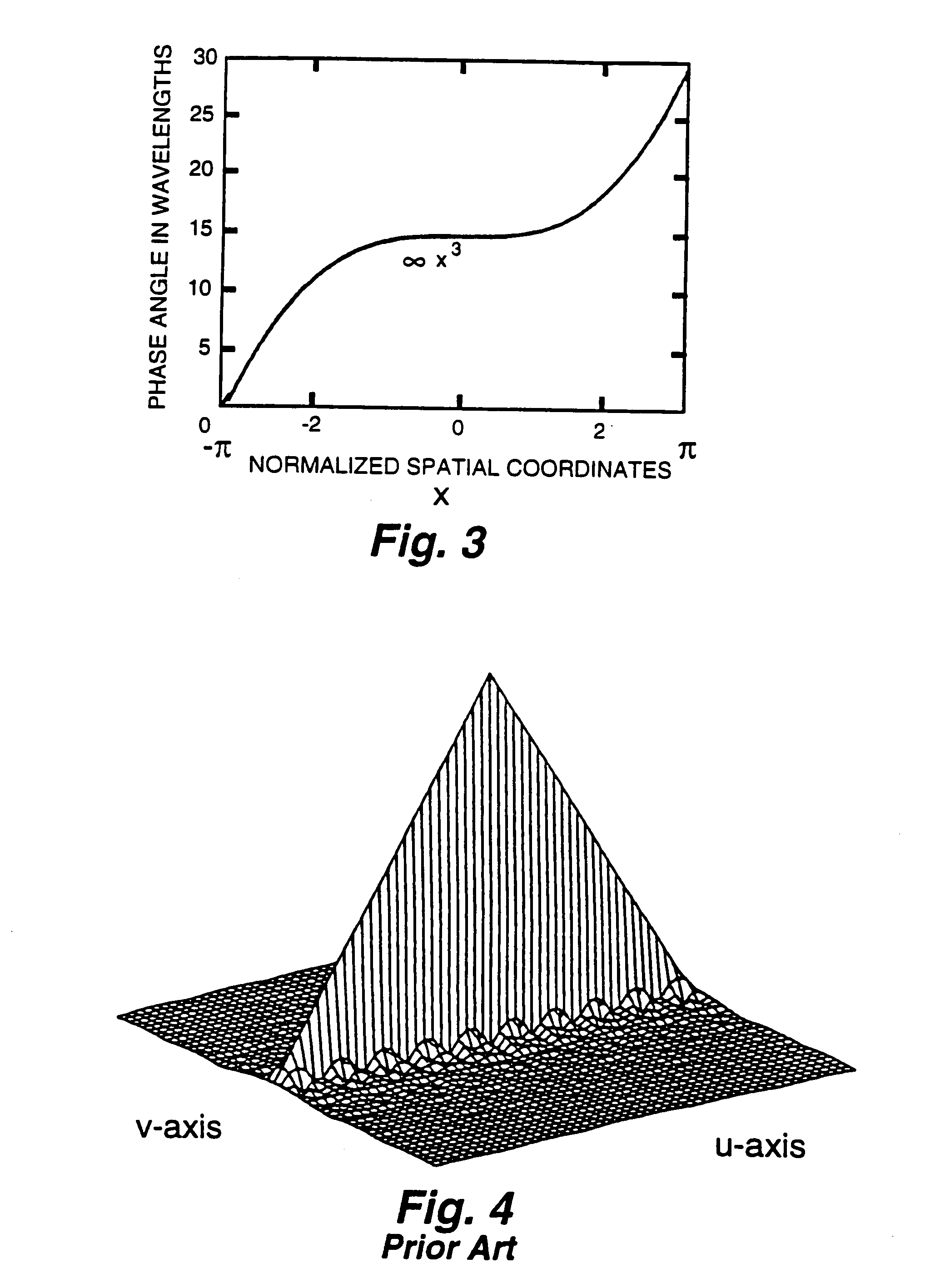Extended depth of field optical systems
a technology of optical systems and depths, applied in the direction of direction/deviation determining electromagnetic systems, instruments, reradiation, etc., can solve problems such as red light focus in a different plane, minimize the effects of misfocus aberration, and extend the depth of field of imaging systems.
- Summary
- Abstract
- Description
- Claims
- Application Information
AI Technical Summary
Benefits of technology
Problems solved by technology
Method used
Image
Examples
Embodiment Construction
[0074]FIG. 1 (prior art) shows a standard optical imaging system. Object 15 is imaged through lens 25 onto Charge Coupled Device (CCD) 30. Such a system creates a sharp, in-focus image at CCD 30 only if object 15 is located at or very close to the in-focus object plane. If the distance from the back principal plane of lens 25 to CCD 30 is di, and focal length of lens 25 is f, the distance, d0, from the front principal plane of lens 25 to object 15 must be chosen such that:
[0075]1do+1di-1f=0
in order for the image at CCD 30 to be in-focus. The depth of field of an optical system is the distance the object can move away from the in-focus distance and still have the image be in focus. For a simple system like FIG. 1, the depth of field is very small.
[0076]FIG. 2 shows the interaction and operation of a multi-component extended depth of field system in accordance with the invention. Object 15 is imaged through optical mask 20 and lens 25 onto Charge Coupled Device (CCD) system 30, and im...
PUM
 Login to View More
Login to View More Abstract
Description
Claims
Application Information
 Login to View More
Login to View More - R&D
- Intellectual Property
- Life Sciences
- Materials
- Tech Scout
- Unparalleled Data Quality
- Higher Quality Content
- 60% Fewer Hallucinations
Browse by: Latest US Patents, China's latest patents, Technical Efficacy Thesaurus, Application Domain, Technology Topic, Popular Technical Reports.
© 2025 PatSnap. All rights reserved.Legal|Privacy policy|Modern Slavery Act Transparency Statement|Sitemap|About US| Contact US: help@patsnap.com



